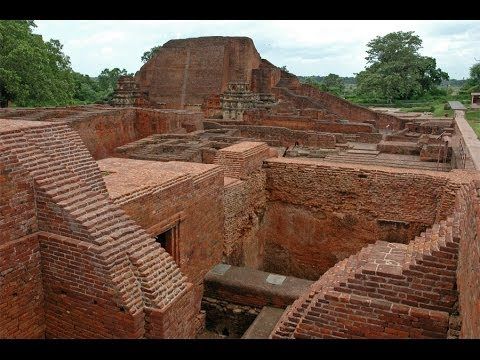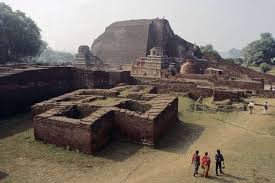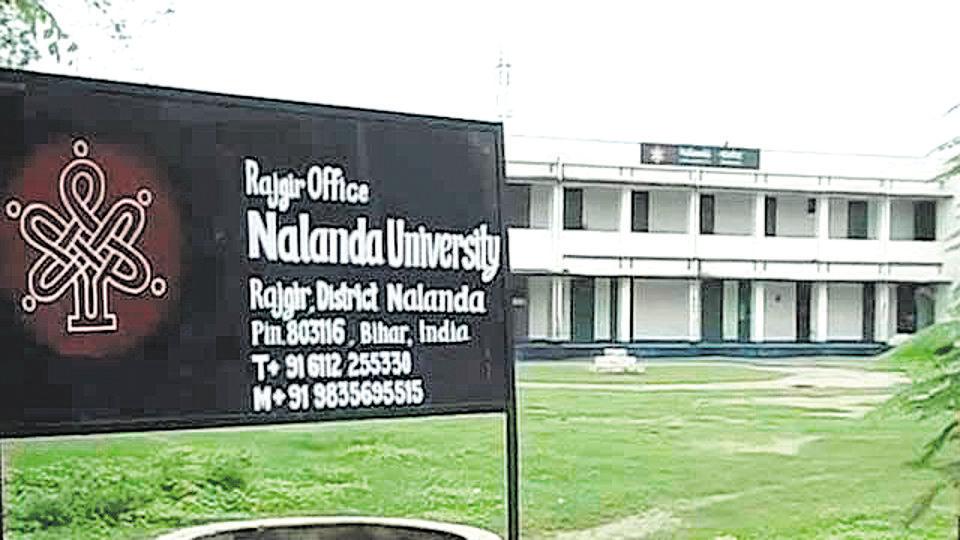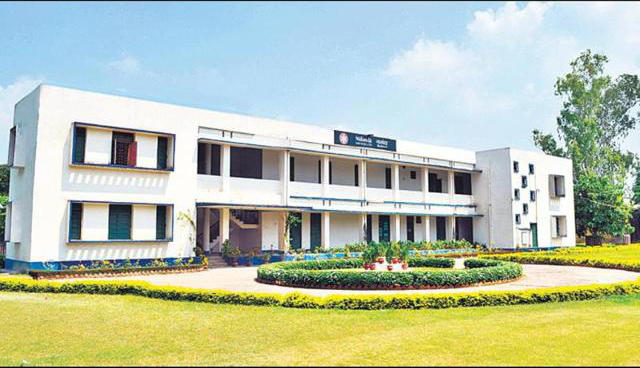The ruins of Nalanda Mahavihar
“A life of joy and happiness is possible only on the basis of knowledge and science”
— Dr. Sarvepalli Radhakrishnan —
If you do, you will never cease to grow. An investment in knowledge pays the best interest. The function of education is to teach one to think intensively and to think critically. Intelligence plus character – that is the goal of true education.
In words of Swami Vivekananda “Education is the manifestation of divine perfection already existing in man”. He also said “Educate our people, so that they may be able to solve their own problems. Until that is done, all these ideal reforms will remain ideals only”.
Indian education was on the top in the whole world for its two top most universities- Takshashila and Nalanda where the students from all across the world came to attain specialization. Famous graduates of Takshashila University include the ones like Chanakya, Panini, Charaka, Vishnu Sharma and many more. The architecture of these Universities were built in such a way that there was ample amount of fresh natural air and cross ventilation in the rooms which made the place airy and cool without the use of electrical fans or air conditions. India should achieve this pride again to prove to other nations that we are still enriched with knowledge. Other Nations should feel proud to get education in India, and then only India will once again be called “VISHAV GURU.”
Education in India and its spectra was influenced by the dynasties that governed the Indian cultural for periods. Great example of it is Nalanda University.
‘Nalanda’ in Sanskrit: NA + ALAM + DAA, which means “no stopping of the gift of knowledge”. In other words it meant that the spreading of knowledge should be eternal. The site of Nalanda is located in the Indian state of Bihar, about 55 miles south east of Patna, and was a Buddhist center of learning from 427 to 1197 CE. It has been called “one of the first great universities in recorded history. Some buildings were constructed by the Mauryan emperor Ashoka the Great (i.e. Raja Asoka: 273–232 BCE) which is an indication of an early establishment of the Buddhist learning center
Nalanda. TheGupta Empire also patronized some monasteries. According to historians, Nalanda flourished between the reign of the Gupta king Śakrāditya (also known as Kumāragupta, reigned 415-55) and 1197 CE, supported by patronage from Buddhist emperors like Harsha as well as later emperors from the Pala Empire. The complex was built with red bricks and its ruins occupy an area of 14 hectares. At its peak, the university attracted scholars and students from as far away as China, Greece, and Persia. Nalanda was sacked by Turkic Muslim invaders underBakhtiyar Khalji in 1193, a milestone in the decline of Buddhism in India. The great library of Nalanda University was so vast that it is reported to have burned for three months after the Mughals set fire to it, sacked and destroyed the monasteries, and drove the monks from the site. In 2006, Singapore, India, Japan, China and other nations, announced a proposed plan to restore and revive the ancient site as Nalanda International University.
History of Nalanda:
Nalanda University was one of the first universities in the world, founded in the 5th Century BC, and reported to have been visited by the Buddha during his lifetime.
Historical studies indicate that the University of Nalanda was established during the reign of the Gupta emperorKumaragupta. Both Xuanzang and Prajñavarman cite him as the founder, as does a seal discovered at the site.
As historian Sukumar Dutt describes it, the history of Nalanda university “falls into two main divisions–first, one of growth, development and fruition from the sixth century to the ninth, when it was dominated by the liberal cultural traditions inherited from the Gupta age; the second, one of gradual decline and final dissolution from the ninth century to the thirteen–a period when the tantric developments of Buddhism became most pronounced in eastern India.
Nalanda University was a completely residential university. At its peak, in the 7th century AD, Nalanda held some 10,000 students and 2000 teachers. It was able to embrace knowledge in its entirety to become uniquely attractive for all seekers of pure knowledge. The profound knowledge of the Nalanda teachers attracted scholars from places as distant as China, Korea, Japan, Tibet, Mongolia, Turkey, Sri Lanka and South East Asia in quest of knowledge. These scholars have left records about the ambience, architecture and learning of this unique university. The most detailed accounts have come from Chinese scholars and the best known of these is Xuan Zang who carried back many hundred scriptures which were later translated into Chinese.
Nalanda University – A Structural masterpiece

- The University was considered an architectural masterpiece, and was marked by a lofty wall and one gate.
- The center had eight separate compounds, ten temples, mediation halls, classrooms, lakes and parks.
- A vast library with three buildings and quarters for the students and the teachers dominated the landscape.
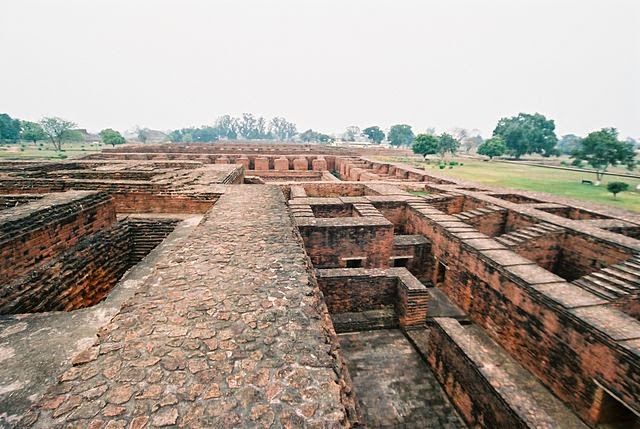
Dormitory of the students:Nalanda University was the first of its kind which was a boarding university in the true sense. The whole boarding system was divided into three layers or floors of the dormitory. New students lived in the basement, middle-level students at the ground and dormitory captain and more experienced students at the top floor. There was a stairway system to connect the floors. There were as many as 300 rooms.
Ventilation system at the dormitory: There were no proper windows. However, fresh air and sunlight were ensured by the ventilation system at the dormitory was an opening. These openings where wide and inclined in nature to allow the air and sunlight to come in through.
Drainage system: The drainage system was also hierarchical in nature. There was the main drainage system which carried the water of the whole settlement then there was smaller drainage which was from households. This drainage system was more or less inspired by the Harappan culture. The bigger drains were seated deeper in the earth while the smaller drains were shallow. so that smaller drainage could flush in the bigger and dipper seated drainage.
The library of Nalanda, known as Dharma Gunj (Mountain of Truth) or Dharmagañja (Treasury of Truth), was the most renowned repository of Buddhist knowledge in the world at the time. It was praised as the world’s largest collection of Buddist literature and contained thousands of hand written manuscripts. It was a grand complex to house thousands of sacred and rare scriptures. There were different libraries for the Hindu and Buddhist scholar.

Some of the library buildings were as high as nine stores. Exact volume of the books is still not known. The library had three main buildings as high as nine stories tall,
- Ratnasagara (Sea of Jewels),
- Ratnodadhi (Ocean of Jewel) and
- Ratnaganjaka (Delighter of Jewels)
Ratnasagar held the collection of rare and sacred manuscripts like Prajnaparamita Sutra, the Samajguhya etc. The great library of Nalanda was so vast and its collection was said to comprise hundreds of thousands of volumes, so extensive that it burned for three months when set aflame by Muslim invaders. The invaders sacked and destroyed the monasteries and drove the monks from the site.
The great library of Nalanda was so vast and its collection was said to comprise hundreds of thousands of volumes, so extensive that it burned for three months when set aflame by Muslim invaders. The invaders sacked and destroyed the monasteries and drove the monks from the site.
Admission Process in Nalanda University:
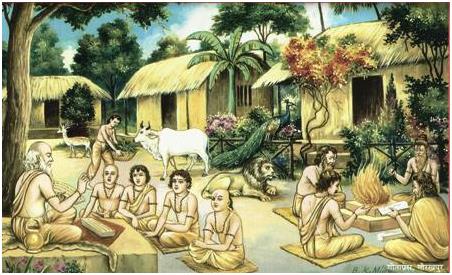
- The admission process in Nalanda University was very strict.
- Students had to go through different tests to prove their ability. The students were required to be familiar with the title and authors of old and new books for the admission to the University.
- Of those from abroad who wished to enter the schools of discussion, the majority was beaten by the difficulty or problems, withdrew: and those who were deeply versed in old and modern learning were admitted: only two or three out of ten succeeded.
Academic:
Great emphasis was placed on the Mahayana system of Learning. The curriculum taught there were not only Buddhist literature, religion and philosophy but also on the Vedas, other books like Chikitsavidya on medicine, Shabdavidya on grammar, Hetuvidya on logic, Atharvaveda which were works on magic, Philosophy of Samkhya, metaphysics and Yoga-shastra.
The classroom system at Nalanda university:
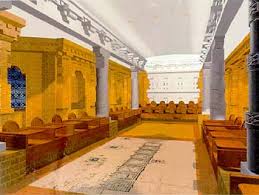
- There were around 10000 students and 2000 teachers in the university.
- The education was fully free.
- No tuition, room and board, or any other charges, to be paid.
- The curricula of the university offered the study of abstract knowledge like Philosophy, religion, Buddhism and scientific thoughts in astronomy, mathematics, anatomy etc. in each classroom.
- Knowledge of Sanskrit was essential and it meant having a complete mastery over Sanskrit, grammar, literature and correct punctuation.
- Students were expected to enter into dialogue with visiting scholars thus logic and exegetics were preeminent subjects.
- There used to be hundreds of students and they were not allowed to go outside until the lecture was over.
- To add to their facility, even a well was there in most of the classroom to quench the thirst of the students if they were thirsty.
- There were around 8 colleges with tens of classrooms.
- A high level of discipline was maintained as can be observed from the presence of a water clock. Laxity was not tolerated.
- There was no punishment of any kind. For the faults or the defects of the students, the teachers punished themselves.
Teaching Methodology:
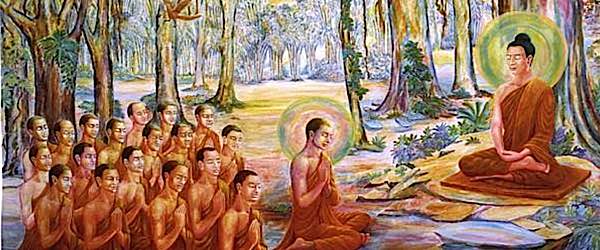
- Teaching was carried out in groups from morning till sunset and the method adopted by the teachers was the Seminar system of questions and discussion.
- Every day classes were arranged for about 100 pupils for preaching and the students attended these discourses without fail even for a minute.
- There was a close touch between students and professors and the students had the opportunity of acquiring knowledge from teacher personally.
- A great importance was laid on discussion and debate to test intellectual capacity and to reject the worthless and to advance the intellect.
- After the study period was over, the award ceremony was conducted taking into account their social status and merit, degrees were awarded.
The teachers:
- Nalanda was an example of the Guru- Shishya parampara, a great Indian tradition.
- The authority of a Guru over the shishya was absolute, and yet dissent was permitted in academic matters.
- The teacher- pupil relation was like that of the father and his son. The greatest delight and the highest reward of the teacher came when his pupil outshone him.
- The standards of scholarship among the teachers were very high.
- They were not only famous for their piety, but were renowned for scholarship also.
- They were eminent for ‘conspicuous talent, solid learning, great ability and illustrious virtue.’
- Nalanda scholars were invited to different countries to establish educational centers there and were
Destruction of Nalanda University complex by Bakhtiyar Khilji:
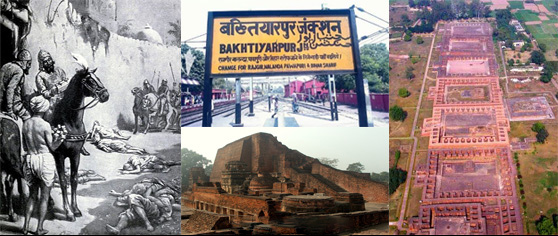
At its peak period when the university had students from as far as Tibet, China, Greeze, Persia, it was attacked by a muslin ruler names Bakhtiyar Khilji in 1193 and the whole university was brutly ransacked and destroyed by the Muslim king. It is said that most of the peaceful Buddhist students could not offer any counter to the ruthless attack.

A few years later, a few of the monks dared to return to the site but it had turned black and due to the heartless rage of the Muslim king terror, even though tried, but Nalanda University could not gain much attraction.
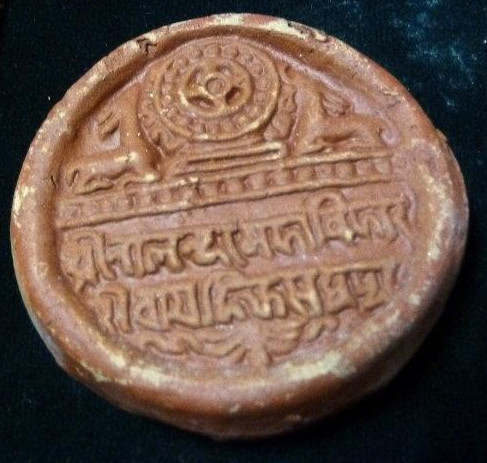
Persian historian in his chronicle Tabaqat-I-Nasiri writes that the monks were driven away, burned alive and thousands of them were beheaded to uproot the Buddhism. It is also believed that the library burned for more than three months and the sky had almost turned grey because of the heavy black smokes. To save their life, remaining monks fled away to Tibet or to other monasteries which are now in West Bengal and Bangladesh which were also a part of this University.
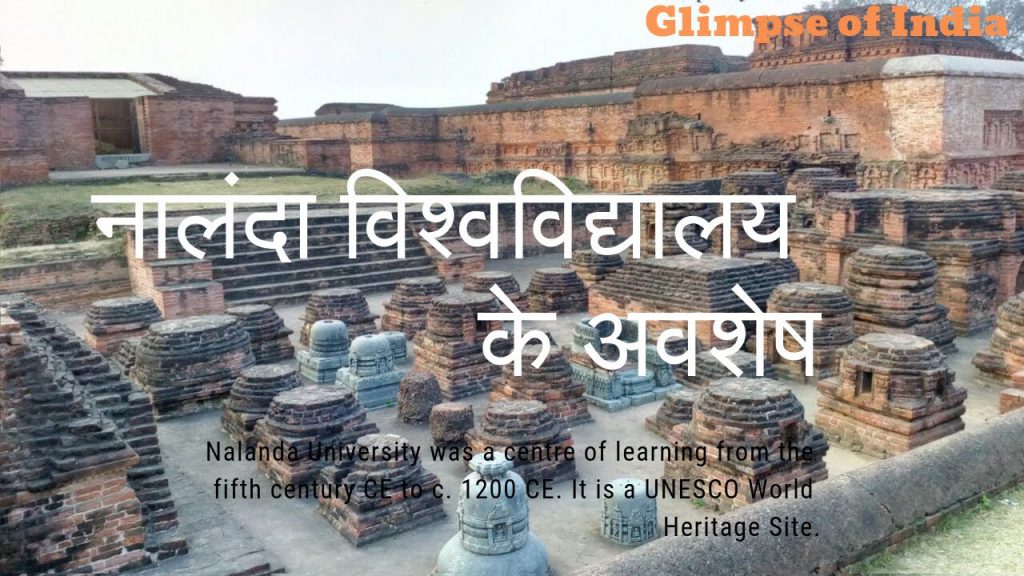
A few years later, a few of the monks dared to return to the site but it had turned black and due to the heartless rage of the Muslim king terror, even though tried, but Nalanda University could not gain much attraction.
Nalanda University in modern days:
REBIRTH OF NALANDA
Eight hundred years after the destruction of Nalanda, former President of India Dr. A.P.J. Abdul Kalam, while addressing the Bihar State Legislative Assembly, in March 2006 mooted the idea of reviving the university. Almost simultaneously, a proposal termed the “Nalanda Proposal” was forwarded to Government of India by Singapore. This proposal sought the re-establishment of a University like Nalanda which would once again be the focal point of Asia. The State Government of Bihar quickly adopted the visionary idea and consulted the Government of India on the way ahead. It also began its search for a suitable location for the new Nalanda University. It identified and acquired 450 acres of land for the University in Rajgir¸ Bihar. The establishment of this University was thus marked by a high degree of co-operation between the State of Bihar and the Government of India.
Nalanda is inspired by the academic excellence and global vision of its historic predecessor and aspires to meet and set global standards of academic excellence and research and enable capacity building in all areas of higher learning. The new Nalanda University is envisaged as a centre of inter-civilizational dialogue. The university began its first academic session on September 1, 2014 with 15 students including five women. Its original faculty consisted of world-class professors from some of the top universities across the globe. Initially set up with temporary facilities in Rajgir, a massive modern campus is expected to be finished by 2020. The university has been designated as an “international university of national importance” by the Parliament of India.


